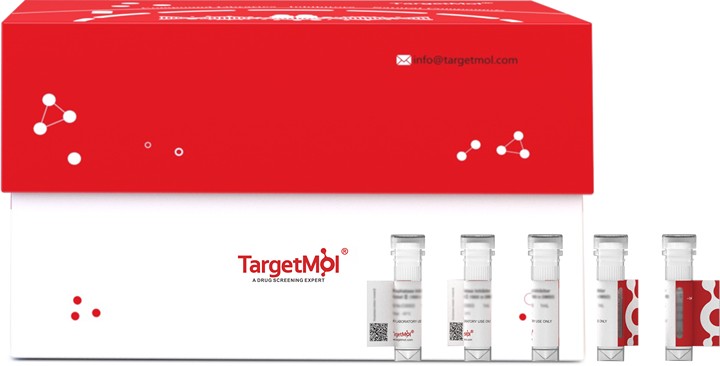Shopping Cart
- Remove All
 Your shopping cart is currently empty
Your shopping cart is currently empty

Human adenovirus C serotype 5 Early E1A protein (His & SUMO) is expressed in E. coli expression system with N-6xHis-SUMO tag. The predicted molecular weight is 44.8 kDa and the accession number is P03255.

| Pack Size | Price | Availability | Quantity |
|---|---|---|---|
| 20 μg | $360 | 20 days | |
| 100 μg | $745 | 20 days | |
| 1 mg | $2,530 | 20 days |
| Biological Activity | Activity has not been tested. It is theoretically active, but we cannot guarantee it. If you require protein activity, we recommend choosing the eukaryotic expression version first. |
| Description | Human adenovirus C serotype 5 Early E1A protein (His & SUMO) is expressed in E. coli expression system with N-6xHis-SUMO tag. The predicted molecular weight is 44.8 kDa and the accession number is P03255. |
| Species | HAdV-5 |
| Expression System | E. coli |
| Tag | N-6xHis-SUMO |
| Accession Number | P03255 |
| Synonyms | Early E1A protein,Early E1A 32 kDa protein |
| Amino Acid | MRHIICHGGVITEEMAASLLDQLIEEVLADNLPPPSHFEPPTLHELYDLDVTAPEDPNEEAVSQIFPDSVMLAVQEGIDLLTFPPAPGSPEPPHLSRQPEQPEQRALGPVSMPNLVPEVIDLTCHEAGFPPSDDEDEEGEEFVLDYVEHPGHGCRSCHYHRRNTGDPDIMCSLCYMRTCGMFVYSPVSEPEPEPEPEPEPARPTRRPKMAPAILRRPTSPVSRECNSSTDSCDSGPSNTPPEIHPVVPLCPIKPVAVRVGGRRQAVECIEDLLNEPGQPLDLSCKRPRP |
| Construction | 1-289 aa |
| Protein Purity | > 85% as determined by SDS-PAGE. |
| Molecular Weight | 44.8 kDa (predicted) |
| Endotoxin | < 1.0 EU/μg of the protein as determined by the LAL method. |
| Formulation | If the delivery form is liquid, the default storage buffer is Tris/PBS-based buffer, 5%-50% glycerol. If the delivery form is lyophilized powder, the buffer before lyophilization is Tris/PBS-based buffer, 6% Trehalose, pH 8.0. |
| Reconstitution | Reconstitute the lyophilized protein in sterile deionized water. The product concentration should not be less than 100 μg/mL. Before opening, centrifuge the tube to collect powder at the bottom. After adding the reconstitution buffer, avoid vortexing or pipetting for mixing. |
| Stability & Storage | Lyophilized powders can be stably stored for over 12 months, while liquid products can be stored for 6-12 months at -80°C. For reconstituted protein solutions, the solution can be stored at -20°C to -80°C for at least 3 months. Please avoid multiple freeze-thaw cycles and store products in aliquots. |
| Shipping | In general, Lyophilized powders are shipping with blue ice. Solutions are shipping with dry ice. |
| Research Background | Plays a role in viral genome replication by driving entry of quiescent cells into the cell cycle. Stimulation of progression from G1 to S phase allows the virus to efficiently use the cellular DNA replicating machinery to achieve viral genome replication. E1A protein has both transforming and trans-activating activities. Induces the disassembly of the E2F1 transcription factor from RB1 by direct competition for the same binding site on RB1, with subsequent transcriptional activation of E2F1-regulated S-phase genes and of the E2 region of the adenoviral genome. Release of E2F1 leads to the ARF-mediated inhibition of MDM2 and causes TP53/p53 to accumulate because it is not targeted for degradation by MDM2-mediated ubiquitination anymore. This increase in TP53, in turn, would arrest the cell proliferation and direct its death but this effect is counteracted by the viral protein E1B-55K. Inactivation of the ability of RB1 to arrest the cell cycle is critical for cellular transformation, uncontrolled cellular growth and proliferation induced by viral infection. Interaction with RBX1 and CUL1 inhibits ubiquitination of the proteins targeted by SCF(FBXW7) ubiquitin ligase complex, and may be linked to unregulated host cell proliferation. The tumorigenesis-restraining activity of E1A may be related to the disruption of the host CtBP-CtIP complex through the CtBP binding motif. Interaction with host TMEM173/STING impairs the ability of TMEM173/STING to sense cytosolic DNA and promote the production of type I interferon (IFN-alpha and IFN-beta). Promotes the sumoylation of host ZBED1/hDREF with SUMO1. |

Copyright © 2015-2025 TargetMol Chemicals Inc. All Rights Reserved.